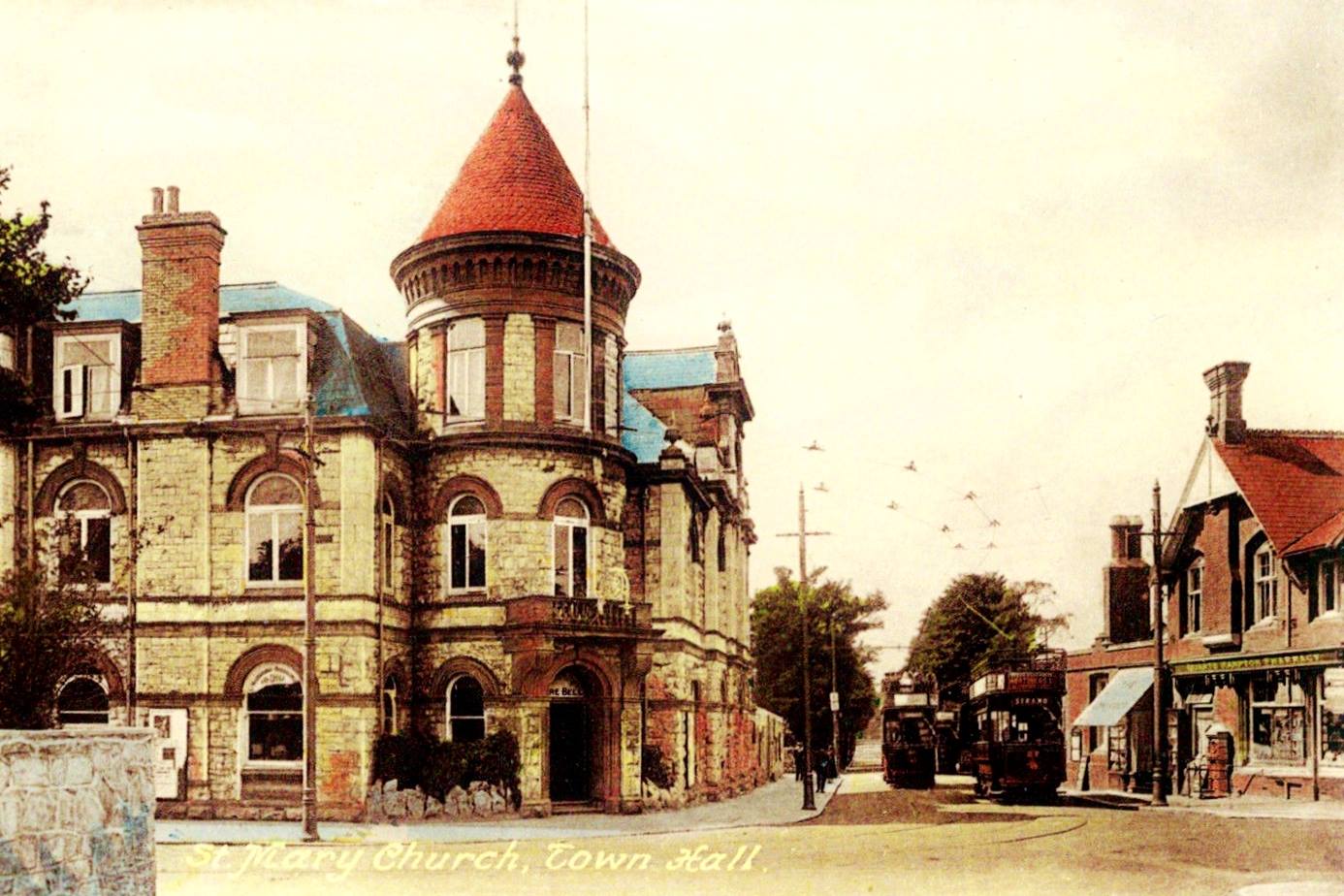By the middle of the 19th century, the population of the area was rising by about 1000 each decade caused by the increasing importance of Torquay as a winter health resort, the coming of the railway and the growing reputation of the Petitor marble industry and the newly established potteries in Watcombe and Hele.
In 1866 the Local Board of Health was elected to look after the public affairs of St Marychurch and the Committee met monthly in the Commercial Inn (now known as The Dolphin Public House). Their purpose was to manage rates and accounts, look after the poor, maintain footpaths, lighting, and scavenging (waste disposal). As their responsibilities increased they felt need of a purpose built building and so instigated a competition for a design for a Town Hall. The winner of the £25 prize was George Soudon Bridgeman who had recently completed Isaac Singer’s “Wigwam” at Oldway Mansion in Paignton.
This gave the Local Board the necessary Council Chamber and administrative offices, a public room on the ground floor for meetings and a large assembly on the first floor. There were store rooms, a kitchen and a covered entrance for carriages at the back, while the top floor was to be a School of Art. The architecture of the building was much admired by a contemporary writer who praised the way that local limestone and imported Ilminster sandstone had been so well used in the walls, the hoods over the window, the balustraded balcony, the gable ends and the tower with its corbelled cornice supporting a circular roof ending in an iron Etruscan Vase finial of great length. The Town Hall, built at a cost of £2,718 2s 6d, was formally opened in November 1883 with a grand dinner to which all the local dignitaries had been invited.
Many speeches were made praising the fine building and predicting the important role it would play in the future life of St Marychurch. The streets were decorated with arches of greenery. After the dinner there was a grand procession through the streets and dancing until the early hours of the morning. As the centre of local government, the Town Hall had a limited life. In 1900, St Marychurch and Cockington were taken into the Borough of Torquay – not without protest on the part of the people of St Marychurch who rumoured that it only happened because Torquay could now take possession of the St Marychurch steamroller!
But for the next half century the Hall remained the hub of community life. Every week, some activity took place within its walls. There were meetings, concerts, bazaars, film shows , whist drives, exhibitions and many of the local sports clubs and societies had their annual dinners and dances in the Supper Room and Ballroom. Dances were especially popular and, for many years to come, people would say that St Marychurch Town Hall was where they met their spouses.
 During the WW2 years the Public Health Department moved into all the offices, the Parish room became a Fire Station and the Supper room a St John’s Ambulance station. Many troops were stationed in the area and for them dances were held throughout the war years.
During the WW2 years the Public Health Department moved into all the offices, the Parish room became a Fire Station and the Supper room a St John’s Ambulance station. Many troops were stationed in the area and for them dances were held throughout the war years.
In 1947 the W.V.S. gave St Marychurch a new clock for the Town Hall. It was unveiled by the Dowager Marchioness of Reading.
After the War the the glory days were over. The hotels were handed back to owners who set about refurbishing dining rooms and installing dance floors where societies now held their big events. Bingo killed off whist drives, television put an end to concerts and ballroom dancing was no longer fashionable among the young. As the years went by the building fell into a state of disrepair, used only for Torbay Council’s Weights and Measures, election purposes and the annual Fuchsia and Geranium Show.
The Town Hall was sold to a local developer and the building was saved from demolition. It is now flats behind it’s façade, but the exterior is looking as it must have done when it opened to such enthusiasm back in 1883.







